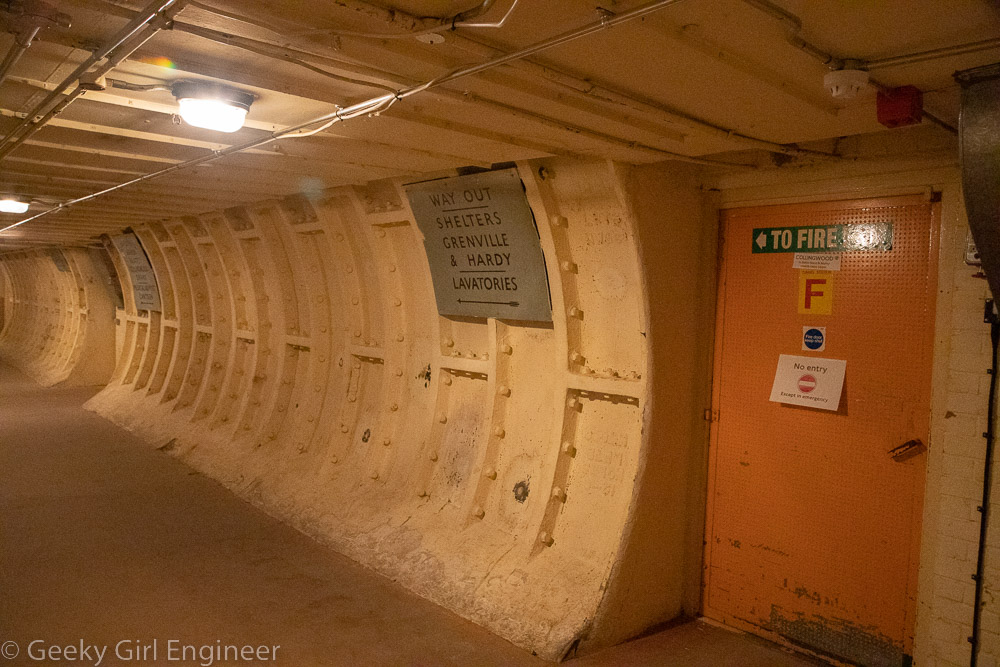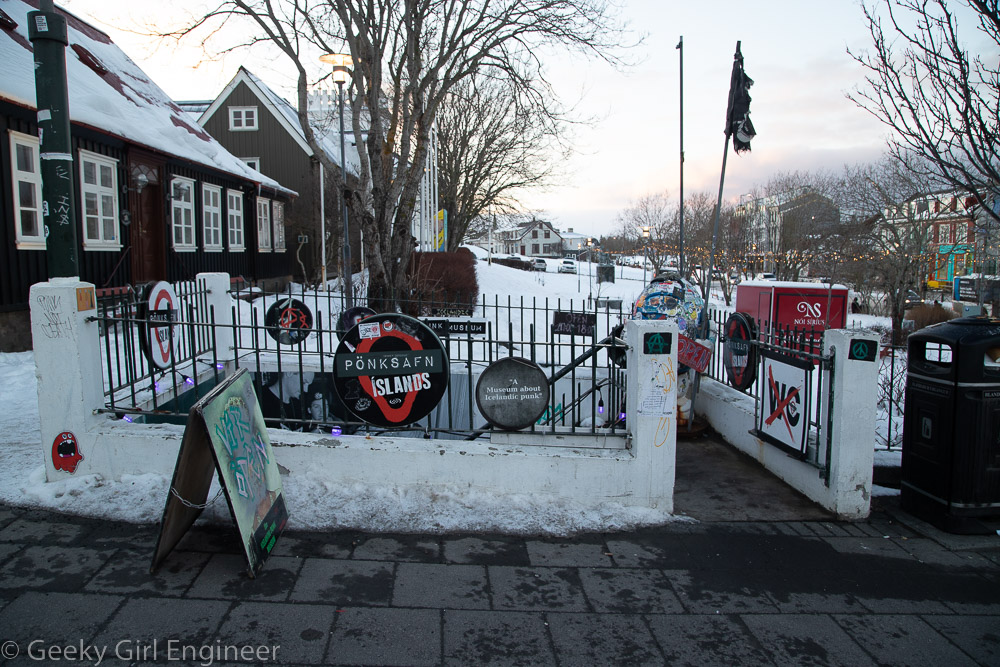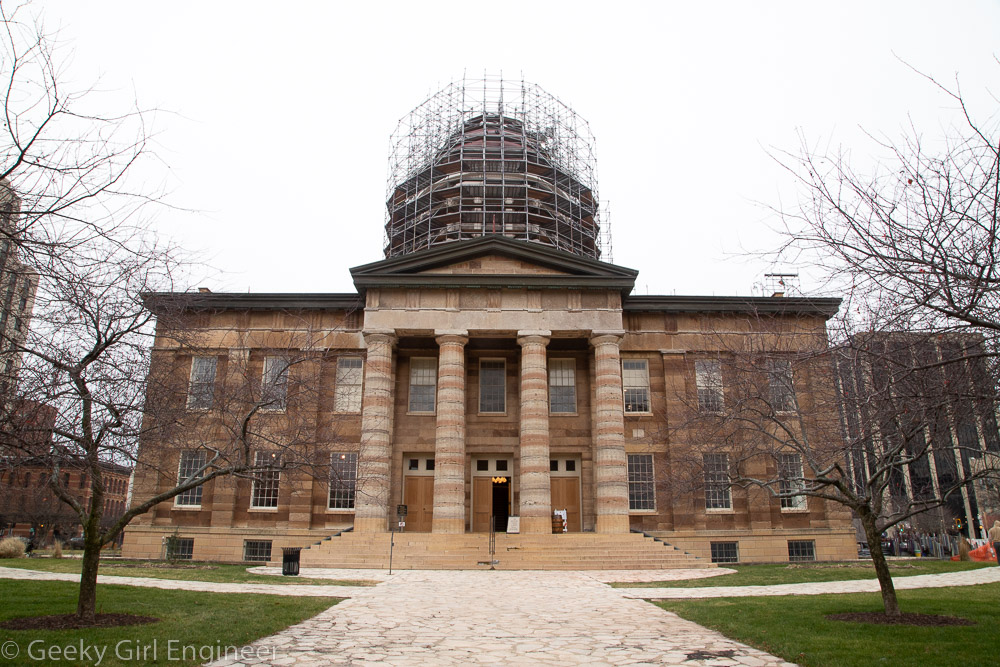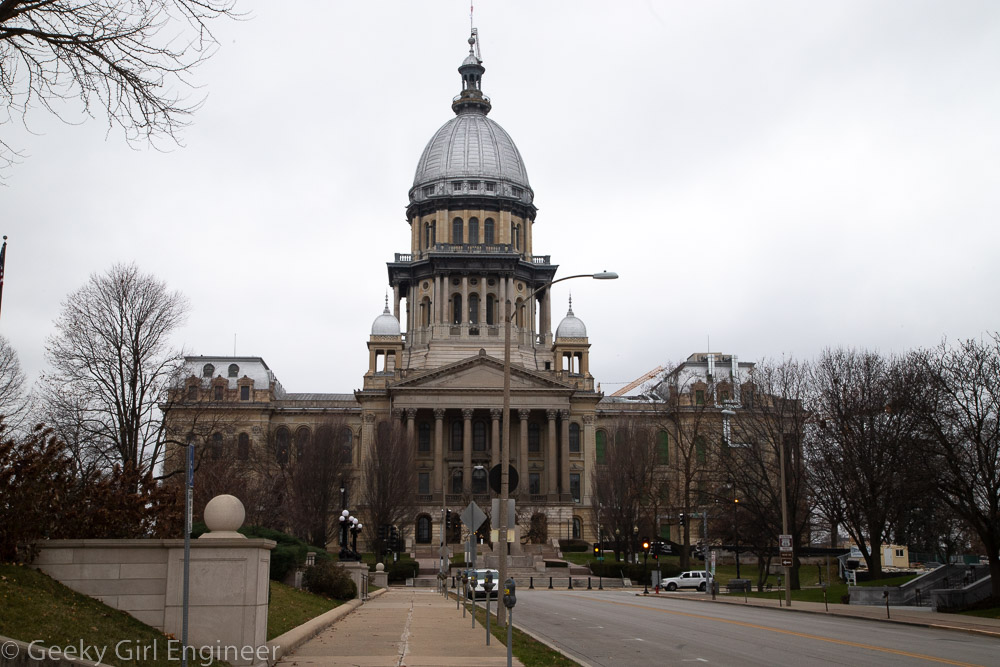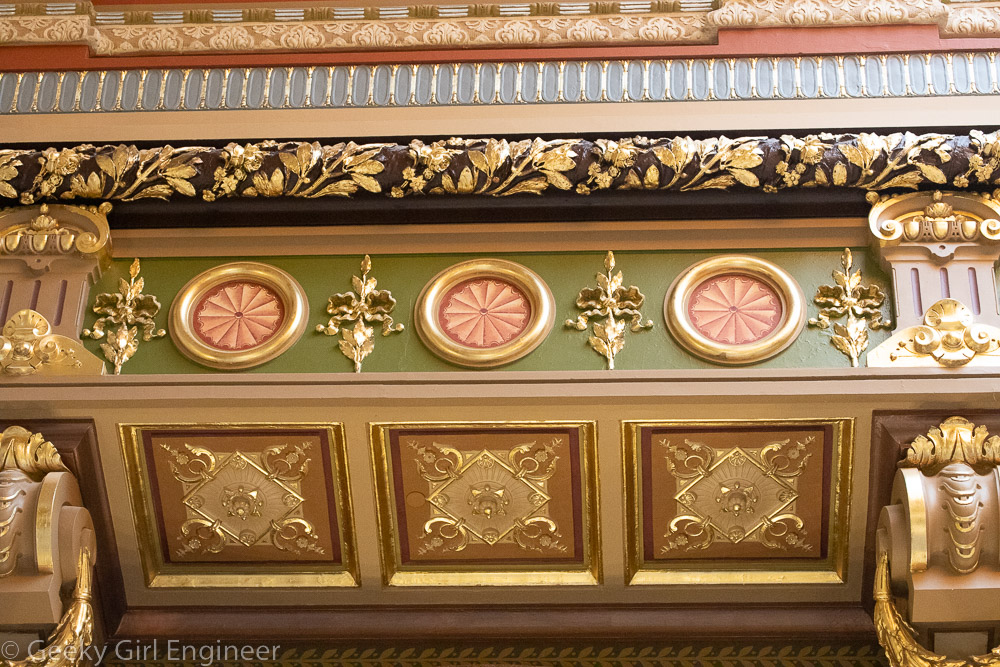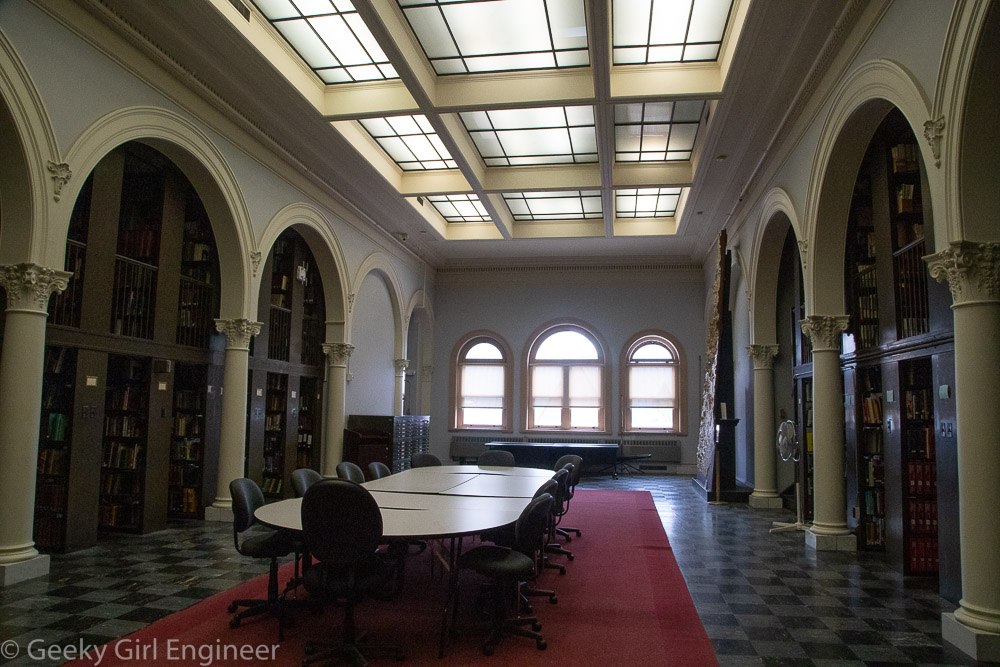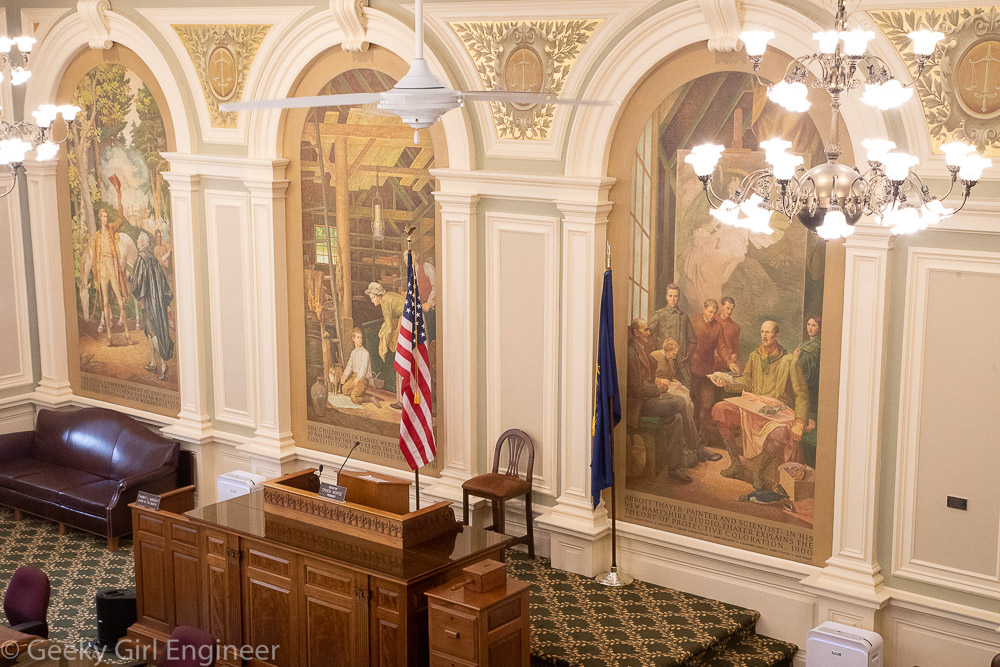Last week, I went for a guided walk with NYC H2O of historic Richmond Town, Staten Island to hear about the history there, in particular how the water affected the history. Historic Richmond Town is a neat little area as it is a park of historic buildings. If I read the information correctly, some of them were moved there to be part of the preservation area. There is a mill there that operated off the creek that runs by the area. Nearby and also part of our walk is Brookfield Park, which is a former landfill. From an environmental engineering perspective, it is nice to see what the landfill has become. Although it is not clear if remediation is ongoing, as the landfill was rather old, so it is not clear what engineering, if any, went into it.
Category Archives: Travel
Google Maps Walking Adventure
I use Google Maps all the time. It is really convenient, and for the most part it works well with various types of travel modes. I probably use it more for walking routes and public transportation than I do for driving. It is far from perfect, and it has a truly annoying habit of refusing to show public transport routes only without cars. It has an annoying habit of telling me to take a car to a subway station, which is just plain silly. You can tell it to give you a no car option, but you have to select that option every single time you use it on the phone. Still, it is useful.
There is a guided walk on Staten Island that I am interested in joining, so I used Google Maps to determine how I could get there on public transportation. Whenever I am in New York City, I always stay in the Penn Station area, so I mapped how to get to the starting point from Penn Station. Below is the route focusing on the Staten Island portion.
The route involves quite a bit of walking from the final bus stop to the walking tour location, and it did not seem like the quickest route. I noticed that the Staten Island Railway (SIR) has a station not too far from the tour location, and it looks like one of the stations was a shorter route, so I had Google route me from the ferry terminal, which is the terminal for the SIR.
Google Maps obliged and routed me via SIR, but the route seemed even more circuitous. It routes me three stops past the closest one to a bus. It then takes me on the scenic route to the walking tour location. I tried then to get it to route me from the closest SIR station to tour location.
Google Maps really wants me to take a walking tour of Staten Island, I guess. This is clearly not the most direct route. I then tried to force it to take me on the more direct route by moving the route. Things just got silly at that point.
This clearly is an absurd route, and it also seems to be taking me on a tour of a golf course, which is probably not an actual walking route. I thought perhaps I was missing something, like a road that was not open or something, so I had it route me from the same starting to ending point but in a car.
What do you know, it knows there is a direct route, but it just refuses to believe you can walk it. I played with it for quite a bit. I also used street view to try to figure out why it would not let me walk on the same street it would let me drive.
After much experimenting, I finally found that it would give me a direct walking route to a nearby coffee shop. I still don’t know why Google Maps will not let me walk directly on to where I want to walk. My best guess is that part of the walk does not have sidewalks. The route definitely does not involve some sort of freeway or similar where it would be dangerous for a pedestrian. However, the answer can’t be lack of sidewalks because a part of the route above does not have sidewalks either based on Google street view. Thus, I don’t know.
TL/DR: AI is not taking over the world yet, at least for navigation.
Bletchley Park
As I am in London, I took a short train to Bletchley Park to see where the British codebreakers worked during World War II. I had read about this place before, so it was neat to see it in person. You can tour the mansion where they originally worker as well as most of the other buildings that were added on later. They also have exhibits explaining how they decrypted codes and machines that were built to aid in decryption. To be honest, even though I understand the basics of decryption, I still had trouble following much of what was explained. However, it was still interesting to see. Also the mansion is beautiful, and the newer buildings are pretty much what you would expect of a WWII government building.
While walking to the mansion, there was a fenced off area where there was a hole, so of course, I had to investigate. I’m walking around this historic site reading about cryptography, and I, being me, have to go investigate any hole in the ground, especially when pipes are involved.
Clapham South: Subterranean Shelter Tour
Last time I visited London, I found out that London Transport Museum offers Hidden London tours, so I signed up for one. It was fantastic, and luckily they were offering another tour while I was here again. This time, they offered a tour of Clapham South subterranean shelter that was built during World War II. When the Germans bombed London during 1940-1941, some people took shelter in London Underground stations, which the transport authorities didn’t really want them to do. The government then asked them to build proper shelters for people. The transport authorities had previously had plans for an express train to run underneath the Northern Underground line, so they used parts of those plans to plan ten shelters to each shelter 10,000 people underneath Northern line stations. Only eight stations were built though, and London Transport Museum now owns one of them, the one that that was built under Clapham South station.
The shelter is 11 stories underground and has over a mile of subterranean passageways. It is accessed via a spiral staircase with many, many steps. [We had to walk down them and then back up when the tour was over.] The shelters were built just like London Underground tunnels with the idea that after they were no longer needed as shelters, they could be used to start construction of the previously mentioned express lines. That never happened though. The tunnels were all divided in half horizontally, so that they formed double-decker shelters. Each level was then divided into eight sections all given names of historical people, with rows and rows of beds. People would be assigned a bed and told which section and which bed number was theirs. The shelter were not finished before the end of the Blitz, but they were used later when V-1 and V-2 bombs hit London. Government propaganda advertised them as “luxury tunnels” with “comfortable canteens.” Those terms are kind of relative. The beds were small and really close together. They did have lavatories, but the toilets consisted of buckets with a possible seat. The buckets were emptied into a tank. This is my favorite part (especially as an engineer), when the tank needed to be emptied, a valve was turned to add compressed air, and another valve was turned to allow the compressed air to (hopefully) shoot the waste up into the sewer tunnels above. However, the shelters certainly kept people safe from bombs. Some people who stayed there had no other place to go as their home was destroyed.
After World War II, they continued to be used at different times. In 1951, there was a huge festival in London, and the shelter was opened as “Festival Hotel.” Also, Caribbean migrants arriving on the Empire Windrush stayed there temporarily. Finally U.S. troops stayed there in the 1950s. Some of the shelter were later used for archiving material.
Reykjavik
I previously visited Reykjavik while on a two week visit to Iceland. I’m back for a short visit in hopes of seeing the aurora borealis. Thus far the weather and solar activity has not cooperated for that. Today I walked around a bit and took a few more photos.
In the middle of Reykjavik is a large pond, but in winter it is completely frozen over, except for a small corner. All the waterfowl are congregated in that area waiting on people to bring them bread. (On my Reykjavik post from 2014, there are photos of Tjörnin and the area in front of City Hall in May to compare how they look in winter and summer.)
Springfield, Illinois
This past weekend, I went to Springfield Illinois to see the state capitol. I took the train from Chicago, so I had a bit of time to wander around based on the train schedule. There are a couple square blocks that are now a national park where Abraham Lincoln’s house is, as well as many other maintained old houses. I didn’t have time to really explore the park, but the houses are neat to look at from the outside. Lincoln features prominently across the city, which although I understand he was from there, is still slightly ironic in that there is also a Lincoln, Illinois. Downtown, at least, is very small and walkable, and I enjoyed seeing many of the old buildings.
Illinois State Capitol
Yet again, I have traveled quite a distance to be confronted with a state capitol where part of the building is off limits, and no one bothered to post that on the website. I am in Chicago for the weekend, so I decided to take the train to Springfield for the day (3 hours each way). Once I got to the capitol, I saw that half of it appeared to be under renovation. Upon entering, it was confirmed that the entire Senate side is under renovation and off limits. This was not a surprise renovation. It has clearly been ongoing for a while. Did they post this on their website? No. I do understand that many people would not care if they can only see half the building. I am not one of those people. So as with Connecticut, I will have to come back here in several years, once I can confirm the renovation is over.
With that gripe being said, the building itself is gorgeous. It is really ornate. In many of the capitols I have seen thus far, there is a lot of symbolism in the ornateness. Either there is not in this one, or the guide did not mention it. Symbolism or not, it is beautiful. The building interior is covered with lots of different stone, mainly marble, in many different colors. The dome is spectacular. The House chambers has lots of dark wood with crystal chandeliers. As is my habit, I asked how the light bulbs were changed. A pulley system is used. Finally one detail I noted is that the exit signs have a fancy font. I found that slightly amusing and a nice touch. With a building this ornate, no plain font with do, even for the exit signs.
New Hampshire Telephone Museum
While touring the New Hampshire State Capitol, there was inexplicably a telephone booth in the Governor’s Reception Room. A sign near the booth said it was on display courtesy of the New Hampshire Telephone Museum. This museum was not something that I knew existed, and yes, this grabbed my attention. I needed to know more about this museum. Thus, after visiting the capitol and surrounding area, off I went to the New Hampshire Telephone Museum.
At the museum, I learned that they are not in fact the only telephone museum in the country. Clearly I need to do more niche museum research. The museum was founded by people who built a New Hampshire rural telephone company. It is actually quite interesting as they have telephones from various eras. They also had interesting displays about the various components that make up the telephone system and equipment used to repair and construct the system. They also had a working set of telegraphs powered by modern batteries, which I found funny.
New Hampshire State Library
While visiting the New Hampshire State Capitol, our unofficial tour guide highly recommended walking across the street to see the state library. He said it was a beautiful building, and that also there is a portrait of Daniel Webster that is the scariest painting he had ever seen and belongs in a haunted house. He was right on both counts. The state library building was originally built for the state supreme court to be on one side and the state library to be on the other. Eventually the supreme court got its own building. The building has gorgeous marble fireplaces and other lovely touches like skylights.
New Hampshire State Capitol
Today I visited the last New England state capitol that I hadn’t seen yet. [Sort of, as I still will need to go back to Connecticut when I can see the Senate chamber.] I toured the New Hampshire state capitol. Unfortunately, they did not have guided tours, but they had a nice pamphlet explaining what to see. Then while visiting the Governor’s Reception Room, we met a couple of very friendly, informative employees, including a man, whom I think worked in facilities, who took us to see a couple of sites not printed in the official guide.
New Hampshire’s state house is the oldest state house in which the legislature still occupies its original chambers. I almost feel like some praise should be given to the original builders and designers for building a capitol that has fulfilled its original use for so long and also not managed to burn down like so many other capitols. Similar to other New England state capitols, it is not overly ornate, but it still has some nice touches. It is fairly small. The House representatives don’t even get a desk. Their chamber is essentially an auditorium. New Hampshire has the largest number of state representatives with 400 elected, yet is in the bottom fifth of states by population. However, New Hampshire has the fourth smallest Senate with 24 elected members. The printed guide did not give any explanation for why there is that dichotomy.
Our unofficial tour guide who works in facilities, took us to see this painting of Daniel Healy. The reason he took us to see the painting, is it appears he has six fingers on his right hand. Our unofficial guide had no insight if the man actually had six fingers or if the artist just painted the hand weird or what. I can’t find any information on this man. Thus, I am sharing this mystery with anyone who reads my blog.
























